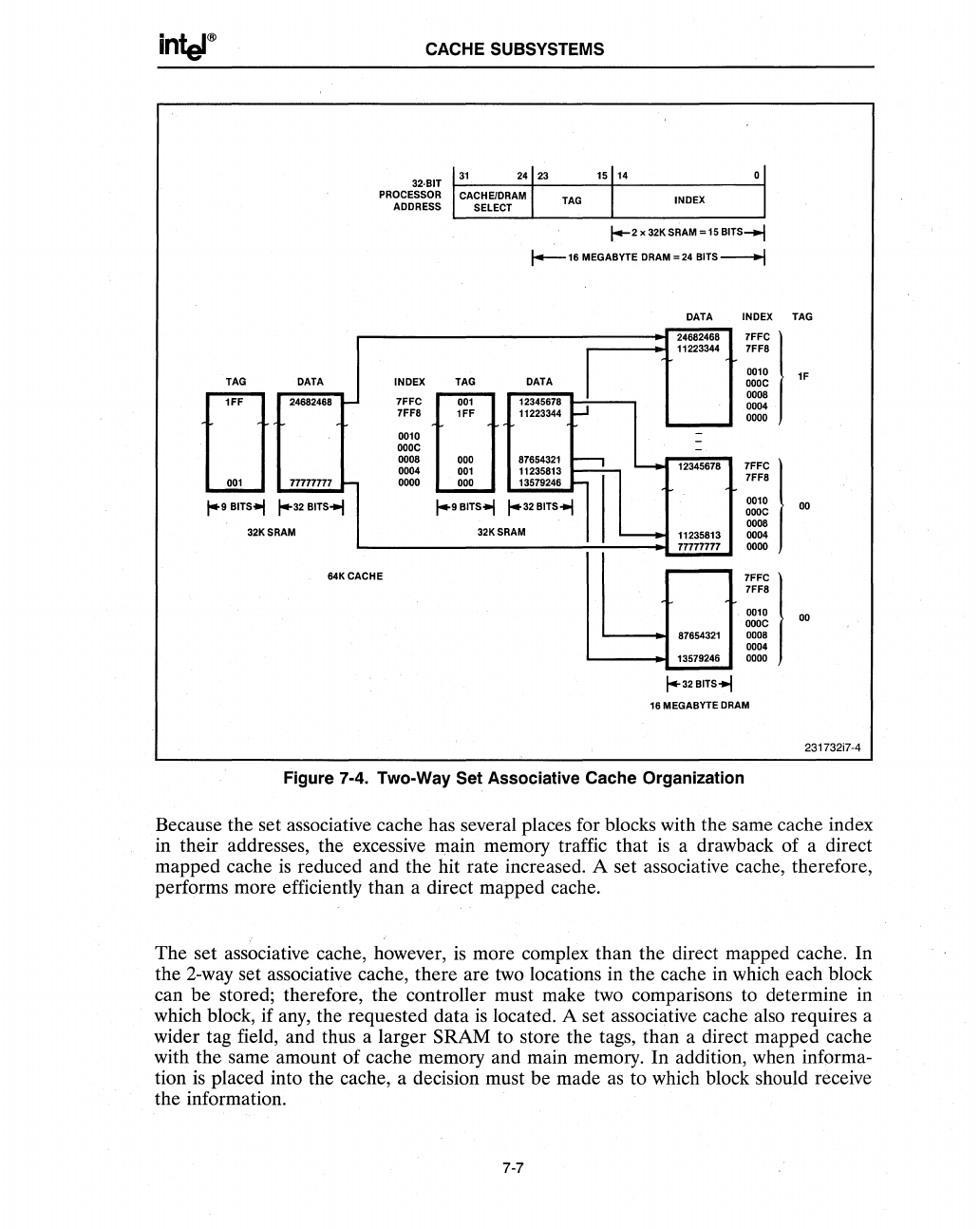
TAG
O
FF
001
~9BITS~
32KS
DATA
24662466
77777777
1+32
BITS--j
RAM
CACHE SUBSYSTEMS
32·BIT
PROCESSOR
ADDRESS
INDEX
I+-
2 x 32K SRAM = 15
BITS--j
1+--16
MEGABYTE DRAM =
24
BITS----.j
DATA INDEX
24862468 7FFC
11223344
7FFB
0010
INDEX
TAG
DATA
OOOC
OOOS
0004
0000
7FFC
001
12345678
7FF8
1FF
11223344
~
0010
-
-
OOOC
-
7FFC
7FFB
0008 000 87654321
P.-
-
12345678
0004
001
11235813
0000
000
13578246
I-
0010
OOOC
1+9BITS~
1+32
BITS--\
OOOS
32KSRAM
-
11235813
0004
77777777 0000
64KCACHE
,,"
l
7FF8
0010
OOOC
87654321
0008
0004
13579246
0000
1+32
BITS--\
16 MEGABYTE DRAM
Figure 7-4. Two-Way Set Associative Cache Organization
TAG
IF
00
00
231732;7·4
Because the set associative cache has several places for blocks with the same cache index
in their addresses, the excessive
main memory traffic that
is
a drawback of a direct
mapped cache
is
reduced and the hit rate increased. A set associative cache, therefore,
performs more efficiently than a direct mapped cache.
The set associative cache, however,
is
more complex than the direct mapped cache. In
the
2-way
set associative cache, there are two locations in the cache in which each block
can
be
stored; therefore, the controller must make two comparisons to determine in
which block, if
any,
the requested data
is
located. A set associative cache also requires a
wider tag field, and thus a larger SRAM
to
store the tags, than a direct mapped cache
with the same amount of cache memory and main memory. In addition, when informa-
tion
is
placed into the cache, a decision must be made
as
to which block should receive
the information.
7-7
